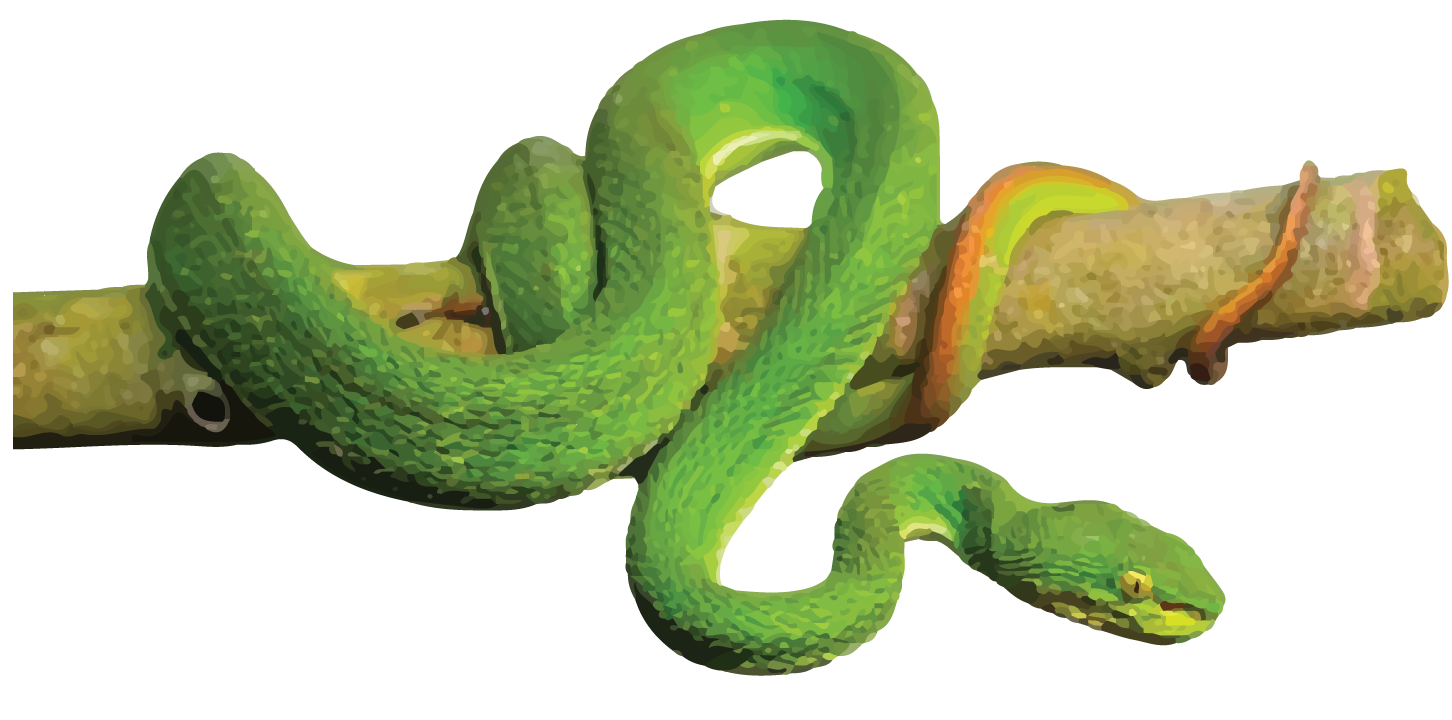Red Tailed Pit Viper

- Habitat: Forested areas, including rainforests and bamboo thickets
- Distribution: Southeast Asia, including countries like Thailand, Myanmar, and Indonesia
- Diet: Southeast Asia, including countries like Thailand, Myanmar, and Indonesia
- Size: Typically 1.5-3 feet in length
Physical Description:
- Appearance: The Red-tailed Pit Viper typically has a slender body with a distinctive, triangular-shaped head that is characteristic of pit vipers. It gets its name from the vibrant reddish or orange coloration of its tail, which contrasts with the rest of its body. Coloration of the body can vary widely and includes shades of green, gray, brown, or even yellow, often with darker patterns or bands along the body.
- Size: Adults generally range from 50 to 70 cm (20 to 28 inches) in length, with females often larger than males.
- Head: The head is broad and distinct from the neck, with large, heat-sensing pits located between the eyes and nostrils.
- Tail: The tail is prehensile, aiding in climbing and maneuvering through its arboreal habitat.
Conservation:
- Status: The conservation status of the Red-tailed Pit Viper is not extensively documented, but like many snake species, it faces threats from habitat loss, fragmentation, and human activities.
- Protection: Conservation efforts should focus on preserving its forest habitats and minimizing disturbances to these ecosystems, including deforestation and agricultural expansion.
Importance:
- Ecological Role: As a predator, the Red-tailed Pit Viper helps regulate populations of small vertebrates, contributing to the balance of its forest ecosystem.
- Human Interaction: While its venom is potent and can cause significant local pain and tissue damage, bites to humans are relatively rare. Individuals should exercise caution and avoid provoking these snakes in their natural habitats.
